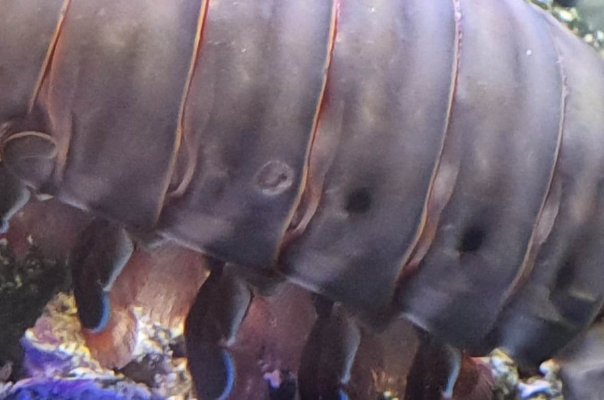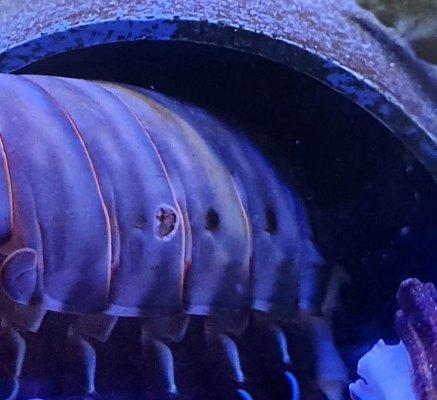I’ve had my mantis shrimp for a month and half. He had a white spot on his back when I got him, but it’s started to change color. For the first week, he accepted frozen shrimp and clams that I dipped in vitamins, but he just throws those out of his burrow. He doesn’t seem to have any interest in frozen foods anymore, but he loves to eat the snails and emerald crabs that he finds in the tank. When he throws the remains out then I will take those out.
He lives in a 30G (120L) with a damselfish (I feed him every other day), two peppermint shrimp, and various snails and crabs. I run a protein skimmer and the nature and blue Juwel lights. He has a network of PVC pipes for his burrow.
His behavior seems normal with him wondering around the tank, decorating, closing his burrow off at night, but I’m really worried about this spot on his back. He hasn’t molted since I got him. Is there anything I can do to help him? Thanks for reading.
Parameters:
Salinity 1.025
Phosphate: <.02
Nitrates 3-5
Ammonia: 0
Nitrite: 0
I do a 30-40% water change every week.
Thanks for reading and for any input.


He lives in a 30G (120L) with a damselfish (I feed him every other day), two peppermint shrimp, and various snails and crabs. I run a protein skimmer and the nature and blue Juwel lights. He has a network of PVC pipes for his burrow.
His behavior seems normal with him wondering around the tank, decorating, closing his burrow off at night, but I’m really worried about this spot on his back. He hasn’t molted since I got him. Is there anything I can do to help him? Thanks for reading.
Parameters:
Salinity 1.025
Phosphate: <.02
Nitrates 3-5
Ammonia: 0
Nitrite: 0
I do a 30-40% water change every week.
Thanks for reading and for any input.


Last edited:


















